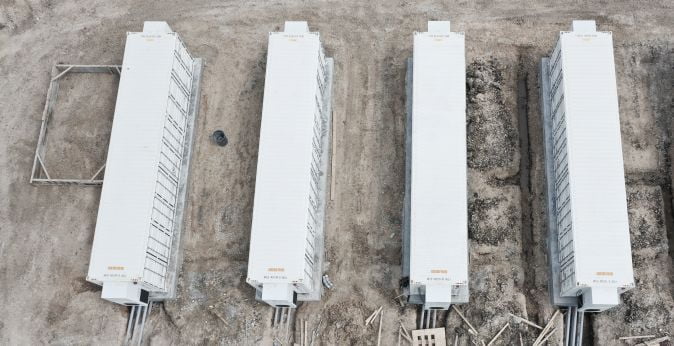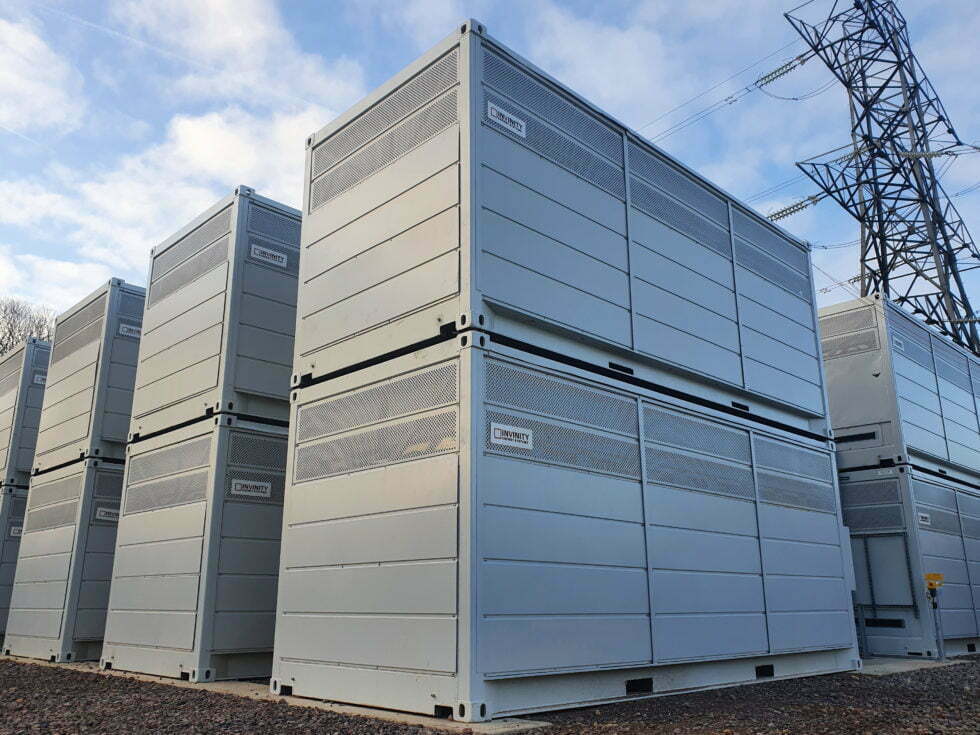Powin is the fifth-largest battery energy storage system integrator in the world. Image: Powin.
Global battery energy storage system (BESS) integrator Powin has agreed to sell a minority stake to Samsung Venture Investment Corporation.
Samsung Venture Investment Corporation (SVIC) has agreed to buy a stake in Portland-headquartered Powin. A press release described SVIC as a fund managed on behalf of Samsung C&T (Engineering & Construction Group), the group’s engineering procurement and construction (EPC) firm, although elsewhere Samsung describes SVIC as the investment arm of the entire Samsung Group.
As part of the deal, Samsung C&T has designated Powin as a preferred storage provider and will bid for new projects with Powin as the BESS hardware and software provider.
The deal will help Powin to reach international markets where it has not completed projects yet, like the Middle East and Southeast Asia, while Samsung C&T, which is nearly 100 years old, has delivered projects in most major markets. For the South Korea-headquartered firm, the deal allows it to invest in the long-term growth of a BESS platform in line with its corporate objective to support the energy transition.
Samsung’s investment follows on from private equity firms Trilantic North America and Energy Impact Partners buying a controlling stake in Powin in February last year, as reported by Energy-Storage.news.
Powin CEO Geoff Brown said: “We are pleased to establish a strategic and forward-looking partnership with Samsung C&T as we accelerate our international growth. The long-term relationships that Samsung C&T has built with customers across the globe and their project execution experience and reputation will be instrumental as we enter new markets. We look forward to learning from Samsung C&T’s immense execution experience as we build the future of energy.”
Like most South Korean chaebol conglomerates, Samsung Group has a complicated ownership structure but what is certain is that C&T is an entirely distinct division from Samsung SDI, the company’s battery manufacturing business.
Samsung SDI has at least in the past owned shares in C&T, however, and in 2015 Reuters reported it would sell a 2.6% stake to comply with South Korea’s competition watchdog. The company has undergone a significant restructuring since then according to Korean media.
Energy-Storage.news has asked Powin to confirm that, as it appears, the deal does not involve Samsung SDI or affect Powin’s battery cell procurement approach. Just a few weeks ago the company announced an expansion of its battery cell and system testing lab in Oregon, which tests different vendors’ technology.
And in a recent interview with this site, Brown said that Powin worked with lots of different cell manufacturers and was keen to engage with new industry players and non-lithium technologies once they become competitive with lithium iron phosphate (LFP) batteries, its current chemistry of choice.
Samsung C&T is best-known for major skyscraper projects including the Burj Khalifa in Dubai, the world’s tallest, the Petronas Towers in Malaysia and the in-development Saudi Stock Exchange Tadawul Tower.
Commodities giant Trafigura invests in LDES startup Malta Inc
In a similar piece of news, commodities trader Trafigura has invested an undisclosed sum in long duration energy storage startup Malta Inc. The deal markets Trafigura’s eighth investment in emerging renewable and clean energy technologies.
Malta has developed a pumped heat energy storage (PHES) system that stores electricity as thermal energy with a discharge duration of up to 200 hours, it claims. It converts electricity into heat and stores it in molten salt then converts that heat back into electrical energy.
The company was founded in 2018 as a spinout of Alphabet’s Moonshot Factory, the Google parent company’s incubator for exploratory technology companies. It raised a US$50 million Series B in March last year and its technical advisor Michael Geyer was recently elected co-president of the Long Duration Energy Storage Alliance.
Continue reading










